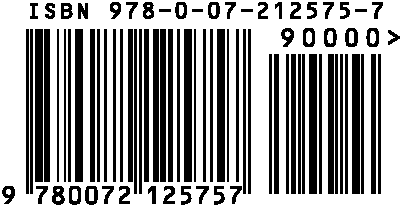QR codes (Quick Response) are matrix barcodes that have been around since 1994. They were originally designed for the purpose of tracking vehicles during manufacturer. The copyright is held by Denso Wave, but anyone can use them.
What is a matrix barcode?
Matrix barcodes are a 2D barcode that contain built in error correction, so if part of the barcode is damaged, then the data on the rest of the barcode can still be read.
A common problem with older so-called 1D barcodes was that if the barcode was damaged, it couldn’t be read.
Another advantage is the amount of data that can be stored in a matrix barcode is greatly increased in comparison to a 1D barcode that could store a product code and the price.

What are 1D barcodes?
The picture above shows a 1D barcode known as an EAN13+5. EAN means European Article Number, and the 13 gives the 13 digits involved in creating the code. The 9 is the country code, the first 6 digits is the manufacturer and the last 5 is the product number with the last being the check digit. If the barcode numbers were tampered with, the check digit would be wrong. Additionally, each of the 1D barcodes contain 3 guard bars that are given the number 6, which for those of a superstitious nature reads 666, which I’m sure is an industry in-joke. The +5 gives an additional 4 digits for price with a checksum. The barcode can be any height but must keep the same width.
There are lots of other variants used around the world for product identification, but they all have the same problem: If the barcode gets damaged, say from a leaky product or a tear, the barcode can be useless. Additionally, manufacturers print barcodes on coloured items that can make scanning difficult. This is why 2D matrix barcodes work so well.
What are the advantages of using QR codes?
QR codes have the distinct advantage over other 2D matrix barcodes in that they are free to use and can be scaled easily to match a product. There are also different versions will differing amounts of data capacity, so a small QR code can be stuck on a business card with contact details of the business, or on a larger product detailing product care or chemical handling.
With the advent of the Internet and camera phones that can read QR codes, it opened up a new world.

QR Code uses
A common use is to provide easy Wi-Fi access to a premises. On the back of a BT router for instance is a QR code, that when scanned by a mobile device will configure the wireless connection.

Another common use is with complex systems like 2 Factor Authentication and One Time Passwords where a secret key needs to be transmitted to the mobile phone app in order to provide a unique code. Instead of having to type a long string of letters and numbers with the possibility that one letter or number could by typed in wrongly, you can scan a QR code to enter that code. If you have a mobile phone and scan the code, you will see an example of what could be incorporated into the barcode.
Other uses
Marketers print posters with a QR code that allows the viewer to scan the code on their phone and be transported to that website to find out more.
In some countries, the QR code is being used as a form of currency exchange. An app can generate a QR code and a scanner on an ATM can convert that code into a transaction. No need for a bank card, and since your phone is locked, it is less likely to be used fraudulently.
Video gaming – By sticking posters around a town or city, players can scan a code to unlock part of a game.
AR codes – Augmented Reality codes enable the wearer to scan a code to unlock augmented features in an area. A good example would be a museum where several pieces of artwork are being displayed but there isn’t the storage space to show all sides, the AR wearer could be able to explore every angle, as well as be able to see where it was found and maybe the discoverers that found it.
There is the potential for misuse, so mobile devices ask the user whether they wish to visit the website enclosed in the QR code.
Can I benefit from QR codes?
If you are in the hospitality industry, you might consider printing your wireless details on a QR code and placing it on your menu so that your guests can benefit from your Wi-Fi.
If you have a need to pass information to a client or customer easily, such as your company details on a business card.
If you have staff that need to enter repetitive information such as product codes into a spreadsheet or database. They can use a hand scanner to read the codes into the computer.
You wish to market your product to a growing mobile driven industry.


